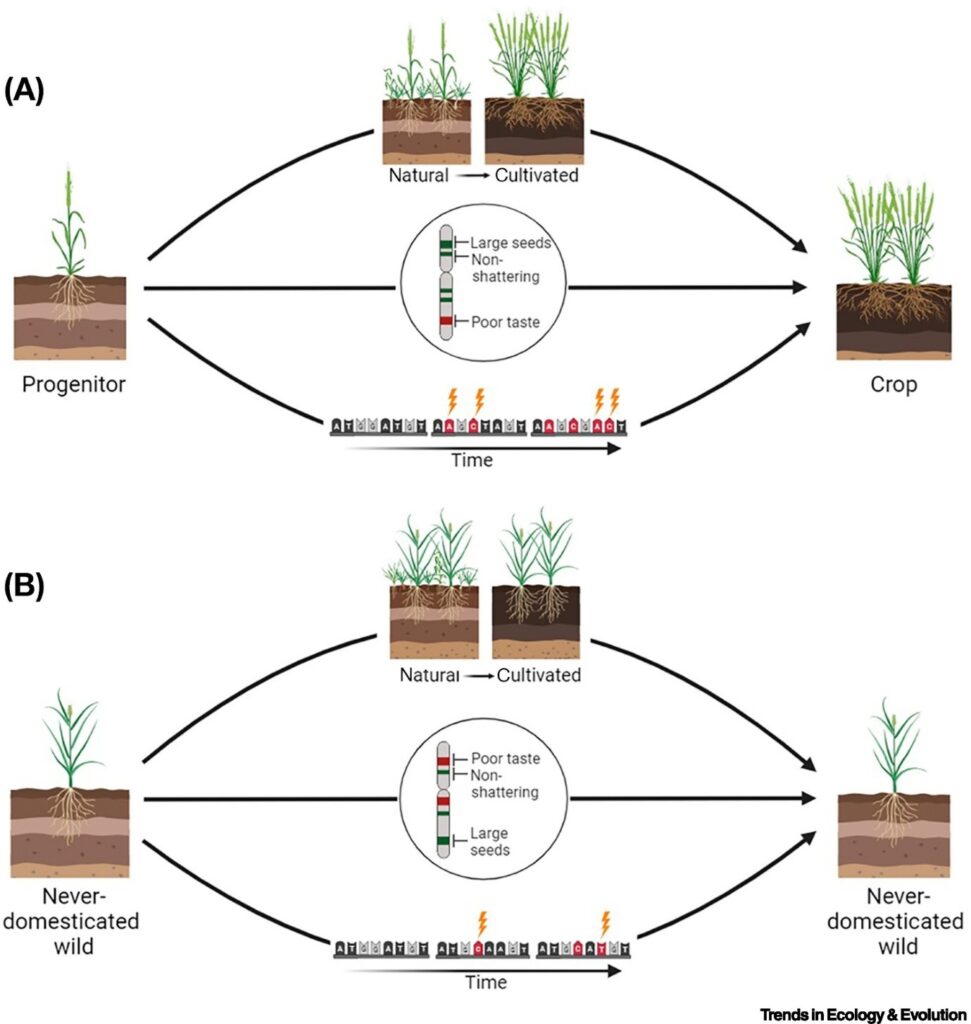Anne (2020 SoCoBio cohort) and Anastasia, a third year SoCoBio DTP student, are happy to share their contribution in the publication in Trends in Ecology & Evolution “‘Domesticability’: were some species predisposed for domestication?”.
Domesticability is the ability of a species to generate and/or maintain heritable variation that can be targeted in the domestication process. This publication identifies gaps in the literature and explores three aspects of plant genomes and phenotypes that could have promoted the domestication of crop progenitors over other wild species. (1) Changes in climate and/or human management could have induced phenotypes that were more plastic in crop progenitors than never-domesticated wild species, leading to their selection. (2) Domestication traits may be linked to a greater extent in crop progenitors than in other wild species, increasing speed of domestication. (3) Mutation rates are faster in crop progenitors than other wild species, generating more variation for selection to act on during domestication. These are promising research avenues where we still lack data on. Research into domestication is encouraged to include never-domesticated wild species to elucidate crop progenitor traits that increased their domesticability.
Building on these hypotheses, Anne and Anastasia are investigating various crop wild relatives in their respective projects. Anne’s PhD assessed plasticity and mutation on wild tomato species, while Anastasia’s work focuses on genetic architecture and linkage of domestication traits in Fertile Crescent crops such as cereal and legume wild species. The two projects aim to evaluate some of the proposed hypotheses, testing them for the first time, and trying to help decipher the mystery of why only certain plants were domesticated. These will develop our understanding on genetic and/or physiological constrains during domestication and support the identification of species for future domestication to aid food security.
To read the whole publication check Trends in Ecology & Evolution (DOI: https://doi.org/10.1016/j.tree.2024.12.007).

Figure 1 Schematic diagrams describing the key hypotheses identified in this article that could influence domesticability.
(A) The transition from a progenitor to a domesticated crop; (B) the parallel for a wild species that does not become domesticated. The differences between (A) and (B) represent how progenitors and never-domesticated species respond differently to a cultivated environment (i.e., plasticity) (top of each panel), have different traits linked in the genome (with positive traits in green and negative traits in red) (middle of each panel), and have a different mutation rate (bottom of each panel).
